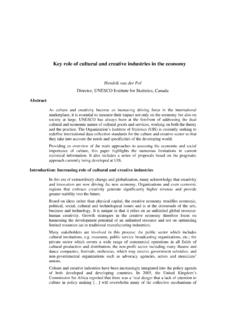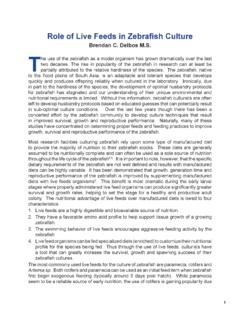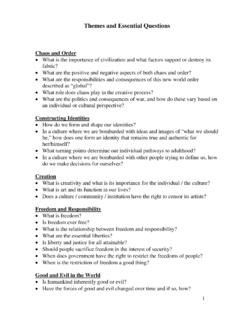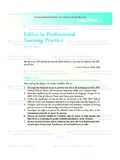Transcription of CREATING A POSITIVE CULTURE - Phyllis Hartman
1 SHRM. WHITE. PAPER. CREATING A POSITIVE CULTURE . By Phyllis G. Hartman , SPHR, and John T. Hayden March 2005. Introduction The importance of HR to any business can be found in its leadership role in adding value through being a champion and caretaker of CULTURE . As business leaders look to the future in a gradually improving job market, a number of problems related to CULTURE confront them. If the economic improvement leads to more jobs, will there be qualified workers available to fill those jobs? Will a loosening of the job market result in some of the best people leaving the organization, since they are no longer afraid to take a chance? Will there be a flight from the formerly downsized companies as workers who took on two and three roles go looking for less stressful situations?
2 As leaders look to answer these questions, it becomes clear that CREATING a workplace that is viewed as having a POSITIVE CULTURE may be not so much a nice thing to do, but a necessity if a business is to attract and keep the brightest and the best. Intellectual capital, or talent, represents the value of today's organizations as it signifies the sustainable competitive advantage. According to studies by Boudreau and Ramstad presented at the 2003 SHRM Masters Series at the Annual Conference, technology and processes can be easily duplicated or copied, people can not. Research has demonstrated that a POSITIVE CULTURE can lead to a good bottom line. In an article for Sports Journal of the Sports Academy in spring of 2001, Jon Yean-Sub Lim and Fred Cromartie examined the relationship between POSITIVE CULTURE and organizational effectiveness.
3 POSITIVE organizational cultures have been linked to increased staff alignment, resulting in enhanced organizational effectiveness, heightened consensus regarding strategic direction, increased employee productivity, and advanced levels of employee commitment. [ ] Only when a critical mass of their employees has taken ownership and responsibility for the needed changes can an organization assure a competitive advantage in today's challenging marketplace (Yean-Sub Lin and Cromarie, 2001). There is even an academic focus on how POSITIVE CULTURE can impact business. A group at the University of Michigan has a Web site and is doing research on this topic. Their Web page states: POSITIVE Organizational Scholarship is an exciting new movement in organizational studies that draws on path-breaking work in the organizational and social sciences.
4 It focuses on the dynamics that lead to developing human strength, producing resilience and restoration, fostering vitality, and cultivating extraordinary individuals, units and organizations. POSITIVE Organizational Scholarship is based on the premise that understanding how to enable human excellence in organizations will unlock potential, reveal possibilities, and facilitate a more POSITIVE course of human and organizational welfare. POS does not adopt one particular theory or framework, but it draws from the full spectrum of organizational theories to understand, explain, and predict the occurrence, causes, and consequences of extraordinary individual, unit, and organizational performance (University of Michigan). What does a POSITIVE CULTURE look like? Jason Miletsky in a 2003 article in Digital Outpost Magazine suggests the following guidelines to CREATING a POSITIVE CULTURE : POSITIVE reinforcement Accolades never hurt.
5 Too often they are overlooked when moving on to the next project. Freedom to create Providing a little direction and a lot of trust is a solid formula for any design project. Flexible work schedule Rigidity in some industries is fine, but with the creative process a flexible schedule can work wonders. No micromanaging The impulse from a director can often be to micromanage a given project. Let the people you hired do the job they were hired to do. Let the passion flow Good creative design people bring a ton of passion to what they do for a living. Though Miletsky is specifically talking about an industry (software development) where creativity is a necessary component, if the success of businesses is dependent on R&D and new technology, as some suggest, then all cultures may need to use these guidelines.
6 A real-life example of a POSITIVE CULTURE effort can be found at the Indiana Regional Medical Center (IRMC) in Indiana, PA. The Center was a 2003 winner of a People Do Matter Award, an initiative in Southwestern Pennsylvania created to encourage effective practices in human resources. IRMC was challenged with recruiting and retaining nurses and allied health care workers in a market shortage. They recognized the need to maintain and increase employee and patient satisfaction by improving the overall employee relations climate in the organization. They put into place a People Practices focus that included the following steps: 1. Address staffing issues and concerns. 2. Instill a total rewards philosophy and ensure competitiveness of compensation and benefits. 3. Improve communication to employees of the big picture.
7 4. Develop strong leaders. 5. Enhance recognition programs and opportunities. 6. Build on the strong sense of pride in the organization. The efforts resulted in across-the-board improvements in employee morale measured by employee opinion surveys done before and after the initiative. In addition, the organization noted decreases in employee turnover of 3% between 2001 and 2002 and continuing drop of .2% from 2002 as of the third quarter of 2003. IRMC identified the lessons they learned as follows: The success of any CULTURE change effort relies on the abilities of all leaders in the organization. Our focus on leadership development has helped our success. Leadership practices such as rounding, personalized recognition and open dialogue are essential to moving from a CULTURE of entitlement and distrust to a CULTURE of performance and partnership.
8 It is important during any CULTURE change effort to celebrate the small wins and realize that change is a gradual process. IRMC recognizes that these efforts are just the foundation and that there are still many challenges and barriers to fully realize its people vision in totality. But, the current results show that significant progress is being made. A key factor has also been the support of senior leadership. Without the support, vision and championing of senior leadership, this effort would have not been possible (James Kinneer, SPHR, CCP, Director, People Development). Other examples of POSITIVE work cultures have been recognized and documented in the SHRM webcast, Great Places to Work available through the webcast library at Factors for CREATING a POSITIVE CULTURE How does an organization establish a POSITIVE CULTURE ?
9 According to Senn-Delaney Leadership Group, there are nine critical factors necessary for an organization to create and sustain a desired CULTURE (Senn and Childress, 1999). These include: Create a shared vision. Ensure that senior leaders are committed to the process and model the agreed- upon behaviors. Define the guiding behaviors that support the organization's values. Conduct a gap analysis via a cultural audit. Connect the need for change to business case and results. Remember that true behavioral change occurs at the emotional level, not intellectual level. Create a CULTURE of coaching and rich in feedback. Remember that change requires a critical mass to negate old behaviors. Align support systems to reinforce the desired CULTURE ( , performance management, hiring/firing, training, recognition, etc.)
10 CREATING a shared vision with all of the employees is a critical first step. A shared vision helps reduce resistance to change and enables all employees to contribute to success. Rather than working at cross purposes with each other, each can contribute to the total success. Since the profiles of the incoming employee populations suggests a need to have an impact Generation X employees do it their way and Gen Y workers want recognition for their part shared vision is a vital component to CREATING a POSITIVE CULTURE using employees from these groups. Empathy, support, communications and opportunities for participation and involvement in establishing and maintaining the vision are the methods for engaging the employees. Commitment and modeling of senior leaders when it comes to formalizing and communicating the vision are also critical.







